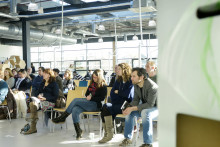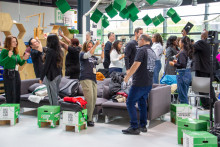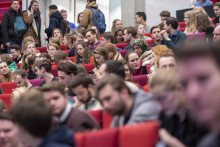Professor Paul Hekkert is the head of the Design Aesthetics group at the Delft University of Technology and his research focuses on aesthetics and behavioral effects of products. 'Designers realize that products can contribute to people´s wellbeing, but also that they influence our behavior and attitudes,' he says.
Impact on our lives and the world
'Let´s take countdowns at traffic lights, which tell you exactly how long you still need to wait for the green light. That is a very simple product, but it has a huge impact. Thanks to this design people are more likely to stop and there are less accidents,' explains Professor Hekkert.
'Products also have impact on our standards. There is an app Peerby, which allows you to borrow things you need from your neighbors. It was designed not only to socialize more, but to change our attitude towards ownership, to make us see that we don´t have to own everything. And that contributes to a sustainable world.'
'We live in an imperfect world'
How to make sure that a design has the desirable effect? 'We have to acknowledge that we live in an imperfect world that we helped to design,' answers Hekkert. 'If we want to have an impact on society, we will always be faced with dilemmas. The dilemma arises from people having to choose between the short-term concern, satisfying their immediate needs, such as buying an unhealthy hamburger in a fast food restaurant, and the long-term concern, such as wanting to stay healthy. Good design can resolve this dilemma.'
Design can either remove the dilemma by truly solving it, or it can bypass or transform the dilemma by giving people another reason to do the right thing. A good example of such design manipulation are running apps that make you run faster by making you believe that there are monsters or zombies chasing you.
'People lack willpower'
Now, why should designers even care about creating a better world? 'Today´s politicians more and more try to only please the people,' says Paul Hekkert. 'But if we keep fulfilling personal, short-term needs, we will make the world even more imperfect. Instead we should show people what is the right choice, paint the picture of the better world and guide people towards it. We need revolutionary designs to do that. People lack willpower. They need things to be easy. That is why there are designs helping us. For instance, the two part toilet flusher with a big and a small button that makes it easier for us not to waste water. Design can make people do the right thing.'







